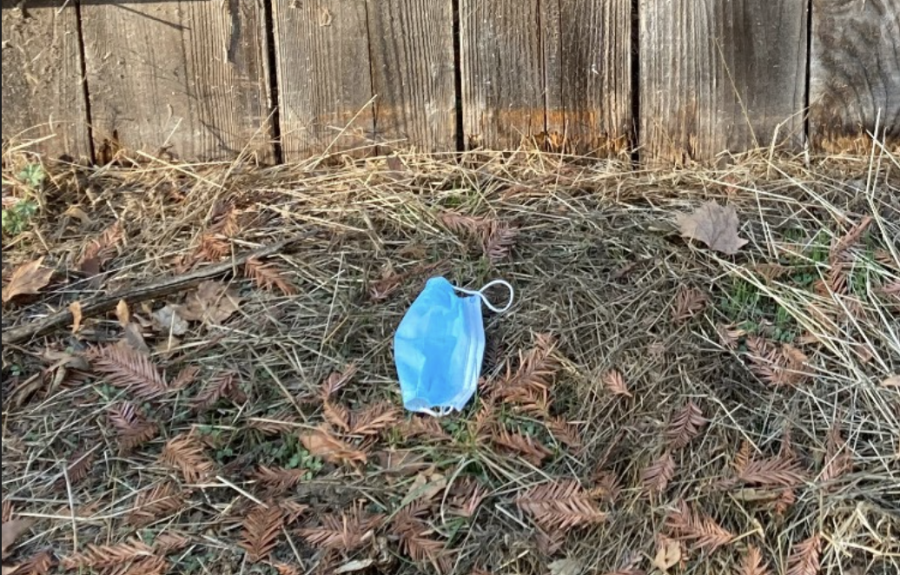Money is Not the Only Cost of Masks
While masks have helped to prevent the spread of the coronavirus, they have also created a harmful impact on the planet. Staff photo: Ella Hartmanis.
December 9, 2020
During the pandemic, it has become apparent that masks and other forms of personal protective equipment (PPE) are necessary to prevent the spread of COVID-19. But PPE comes at a cost to the environment.
China is the world’s greatest producer of single-use-masks, and in February, Chinese facilities were producing 116 million masks daily, which was 12 times normal production, according to The New York Times. Furthermore, The United Nations Trade Body estimates that global sales of disposable masks will total $166 billion in 2020, while in 2019 it was just $800 million. PPE cannot be recycled, so it typically ends up in landfills, in the oceans or strewn across streets.
With a lifetime of approximately 450 years, disposable masks are literally piling up. One proposal is to burn soiled PPE. Burning is currently used for infectious PPE — meaning that it is contaminated with bodily fluids — because high temperatures can destroy viruses, according to The Conversation.
The infectious PPE is sent to hazardous incineration plants to be burned, and the heat produced by waste incinerators at municipal energy facilities can be used to produce electricity or heat for buildings near the plant, according to The Conversation. In some modern waste plants, greenhouse gases can be removed through the use of gas cleaning technologies, which helps reduce air pollution. However, according to the United Nations Environment Programme, many facilities still use unsound burning practices.
Moreover, gowns, single-use gloves, surgical masks and face shields are used in hospitals to ensure that patients do not transmit COVID-19 to nurses and doctors. Similarly, at Menlo, Health Services Coordinator Joan Barada and athletic trainers are required to wear more PPE depending on the situation. Before entering her room, Barada asks students why they have come to see her; if they say they feel ill, Barada puts on a gown, mask and gloves and covers her hair. Athletic trainers do the same.
There are, however, ways to reduce PPE waste while remaining safe. According to Dr. John Brooks, the chief medical officer at the Centers for Disease Control and Prevention’s COVID-19 response program, only healthcare workers require gold-standard protection (N95 or surgical masks) because they are exposed to infected patients for long periods of time. Brooks also noted that the average person is exposed to the virus less often and to lower quantities of it, so they can be protected with cloth masks that are washed regularly.
Barada shared Brooks’ sentiment. “Obviously washable masks are a better way to go, but that’s not something that they can do in the hospital environment,” she said.
Barada also noted the excessive use of gloves by the average person. “I think the general public overuses gloves. I’ve seen people touching things in the grocery stores with their gloves and then touching their face. […] I think the best thing would be to wash your hands frequently or use antibacterial liquid. […] In the hospital, it’s a different situation because you might be coming in contact with bodily fluid.”
Various organizations have started cleaning up PPE that has found its way into the ocean and other parts of the environment. One of these is Operation Mer Propre. Located in France, the non-profit organization recruits underwater snorkelers to manually remove PPE from the ocean, including masks, gloves and hand sanitizer bottles. Established in 2019, the organization also hosts underwater and on-land clean-ups and provides educational projects in schools. They clean up waste along the Côte d’Azur in France and publish images of the waste in the oceans, hoping that it will encourage people to switch to reusable masks.



